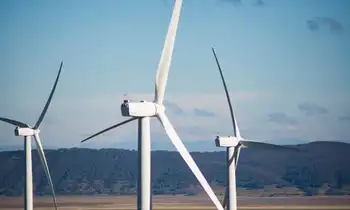Thousands without power in U.S. storms
DENVER, COLORADO - The Civil Air Patrol conducted another aerial sweep of southeastern Colorado to see if any more travelers were still marooned by the blizzard that created 10-foot snowdrifts.
Meanwhile, tens of thousands of customers were still without power in the Plains.
Plow crews in Colorado were working to dig some roads out from the thick blanket of snow left by the storm, the second to hammer the region during the holidays.
"Life and safety are still the No. 1 priorities. We need to get the roads open so people can get out and deal with the situation," said Dick Vnuk, chief of operations for the state Division of Emergency Management.
CAP officials had heard reports of possible stranded motorists along Interstate 70, said patrol spokesman Steve Hamilton. Several of the planes also carried infrared-sensing equipment that could be used to search for snowbound livestock, he said.
At least 12 deaths were blamed on the huge storm in four states, most in accidents on icy roads.
At last, no snow was falling across the middle of the nation as the huge storm that once stretched from Canada to Mexico had picked up speed and moved well to the east. The remains of the weather system poured rain along a line from Florida to New York, with snow in parts of New England. A fleet of small planes canvassed snow-covered roads southeast of Denver on December 31, searching for travelers stranded in areas where roads were blocked by snow drifts that measured 10 feet high. National Guard troops rescued at least 44 people.
"This is a very significant storm; it's in the record books," said Scott Blair, a meteorologist with the National Weather Service.
Up to 32 inches of snow had fallen in western Kansas and wind piled it into drifts 15 feet high.
The Kansas National Guard delivered generators to shelters and assisted living centers. At least 50,000 homes and businesses were still blacked out January 1, but some highways closed because of the snow had been reopened.
The Kansas Highway Patrol also mounted an aerial search for stranded motorists New Year's Day. Pilots found two stuck vehicles the previous day and their occupants were rescued by sheriff's deputies.
Al Butkus, spokesman for the Kansas utility Aquila Inc., said it could be a week before power is restored to all customers.
"We've gotten 3 inches of ice on wires and connectors, and that ice stays there until it gets above freezing," Butkus said. "And the temperatures aren't moving above freezing."
New Mexico got up to 2 feet of snow in Albuquerque.
During the weekend in rural northeastern New Mexico, 44 motorists from as far as away as Louisiana took shelter at the home of Christine and Randy Glover after getting stuck in 3- to 4-foot drifts along U.S. 56, between Springer and Clayton.
"We just were in the right place at the right time," said Christine Glover. The Glovers had to guide some of the travelers to their house by radio because of whiteout conditions in blowing snow.
Utility crews in the Oklahoma Panhandle had restored power to five whole towns that were blacked out by the storm, state Department of Emergency Management spokeswoman Michelann Ooten said Monday. At least 5,000 customers had been affected as the storm dumped 18 inches of snow. Highways were slick and hazardous but open, authorities said.
Some 15,000 homes and businesses were in the dark in Nebraska.
Ten traffic deaths were blamed on the storm in Colorado, Texas and Minnesota. A tornado spawned by the same weather system killed one person recently in Texas, and a Kansas man was reported dead in a rural home where a generator apparently had been in use during the blackout.
Related News

Octopus Energy Makes Inroads into US Renewables
TEXAS - Octopus Energy, a UK-based renewable energy provider known for its innovative approach to clean energy solutions, has announced its first investment in the US renewable energy market. This strategic move marks a significant milestone in Octopus Energy's expansion into international markets and underscores its commitment to accelerating the transition towards sustainable energy practices globally.
Investment Details
Octopus Energy has partnered with Copenhagen Infrastructure Partners (CIP) to acquire a stake in a portfolio of solar and battery storage projects located across the United States. This investment reflects Octopus Energy's strategy to diversify its renewable energy portfolio and capitalize on…




